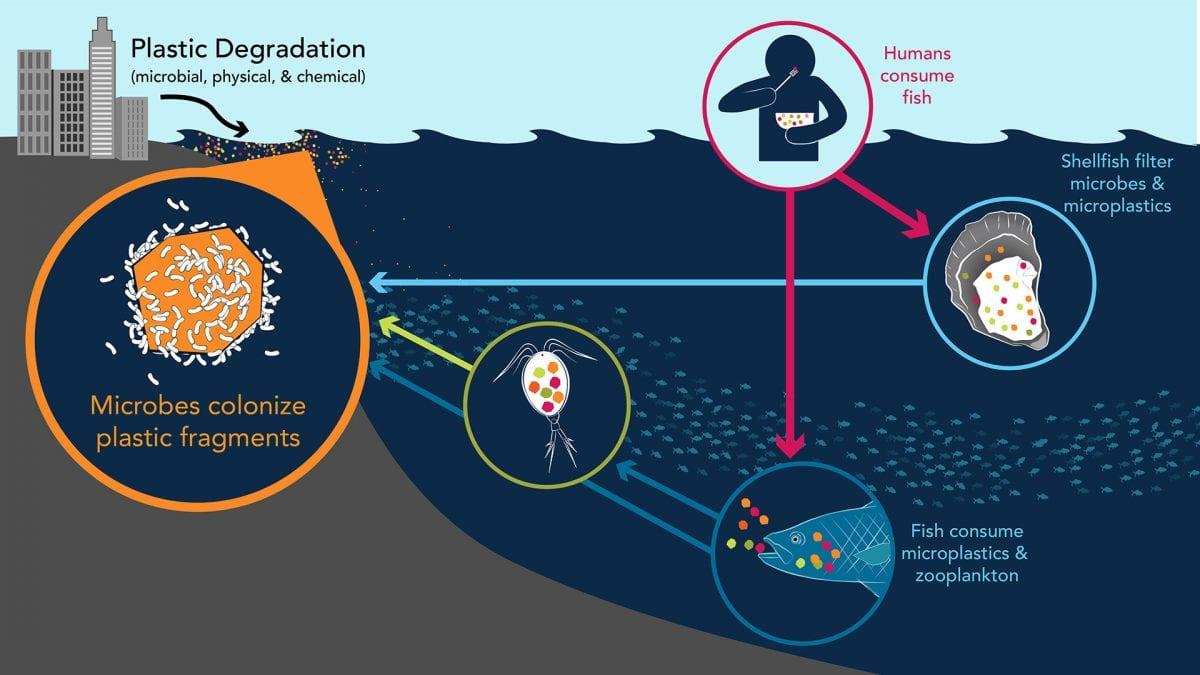Plastic Apocalypse: Dangerous Microplastics Now Turning Up In Human Stool
Last month we revealed how high levels of dangerous microplastics had been detected in some of the most remote regions of the world. Now there are new reports that microplastics are turning up in human stool, a new study suggests.
The study, Detection of Various Microplastics in Human Stool: A Prospective Case Series, examined human stool from eight people around the world and found all had microplastics.
“This small prospective case series showed that various microplastics were present in human stool, and no sample was free of microplastics,” wrote the team of scientists, led by Dr. Philipp Schwabl of the Medical University of Vienna.
“Larger studies are needed to validate these findings. Moreover, research on the origins of microplastics ingested by humans, potential intestinal absorption, and effects on human health is urgently needed.”
Schwabl said volunteers came from Japan, Russia, the Netherlands, the United Kingdom, Italy, Poland, Finland, and Austria. Their daily food intake was the likely entry point for microplastic exposure.
The study didn’t rule out that microplastic exposure could be coming from food wrappers and bottles. None of the volunteers were vegetarians, while six out of the eight had consumed ocean-going fish.
All stool samples were examined at the Environment Agency Austria for ten different types of plastics. As many as nine plastics were found in sample stool, ranging in size from 50 to 500 micrometers. Schwabl said the most common plastics were polypropylene and polyethylene terephthalate.
On average, each stool sample contained about 20 microplastic particles per 10g of stool.
The study wasn’t entirely sure where the microplastics came from or how they were ingested, but because there were various types of plastics, Schwabl said the sources could be from food processing and packaging to seafood consumption.
Since microplastics is relatively a new topic for the scientific community – health impacts, of tiny bits of plastics in human bodies are still unknown.
“Discussion is ongoing about the potential health effects of ingested microplastics and nanoplastics, which (at least in animals) may translocate into gastrointestinal tissues or other organs and cause deleterious effects,” he noted.
Jennifer Adibi, an assistant professor in the department of epidemiology at the University of Pittsburgh Graduate School of Public Health, told Reuters that the new study offers “no insight into health implications” of microplastics in the human body.
Our report from last month shows how microplastics come from industrial economies where rubber and paints are used.
The tiny fragments end up in the sea, where they’re broken down by waves and ultraviolet radiation, before absorbing into the atmosphere. From there, the plastic particles are captured from the air during cloud development, can drift across the Earth via jet streams. At some point, the particles act as a nucleus around supercooled droplets can condense, and travel to Earth as snow or other forms of precipitation.
As far as environmental and health impacts of microplastics, these two studies could suggest a silent plastic apocalypse has infected Earth.
Tyler Durden
Tue, 09/10/2019 – 02:45
![]()
Zero Hedge’s mission is to widen the scope of financial, economic and political information available to the professional investing public, to skeptically examine and, where necessary, attack the flaccid institution that financial journalism has become, to liberate oppressed knowledge, to provide analysis uninhibited by political constraint and to facilitate information’s unending quest for freedom. Visit https://www.zerohedge.com



